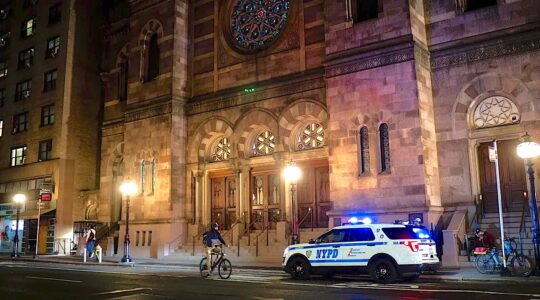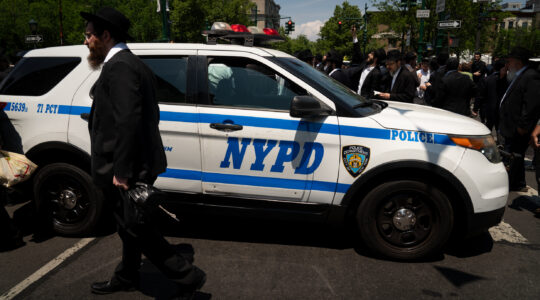Tell people you’re headed to Salt Lake City, and you will be barraged with anecdotes about the days when you had to join a special club as a member to order a beer.
Such was the influence of the Mormon church — officially, the Church of Jesus Christ of Latter Day Saints — that alcohol was severely restricted, in keeping with the faith that is centered in this wide, flat valley in the shadow of snow-capped mountains.
But while religion still permeates life in the Utah capital, what was once an overwhelmingly Mormon culture has given way to a new cosmopolitanism. Yes, you can walk into a restaurant and order a drink without red tape; there’s even a bar in the airport, and when I visited recently, it was full of travelers sipping beer without incident.
Prim rectilinear streets are still laid out in the green, shady grid championed by city founder Brigham Young, but today that grid is dotted with Mexican taquerías, the odd gay bar, and other evidence of social and ethnic heterogeneity. And as of last year, Salt Lake City was among the latest cities to launch a civic bike-share program, encouraging public transit in a region where sprawl is an understatement.
All of which makes Salt Lake City worth a second look — or a first, in my case. And what a first look it was.
From the airplane window, I marveled at the seemingly endless snowy peaks that ring the city, a glorious Western tableau that glistened in the sunlight. As we circled into the international airport, I got my first glimpse of the Great Salt Lake — a vast, singular moonscape of arid mountains, glistening water and smooth mud flats. Shallow and (reportedly) saltier every year, the Great Salt Lake, which lies just out of town, is one of the city’s enduring attractions.
I could only imagine how this wild and savage landscape looked to the Ashkenazi Jewish pioneers who arrived in the footsteps of Young in the mid-1800s. Drawn like so many Americans by the lure of the West, they established a small community of merchants on the Utah frontier. The once-Jewish storefronts of Main and State Streets have undergone many a change since downtown Salt Lake first blossomed, but several of the original buildings are visible today.
Today’s Jewish life is more diffuse, but it thrives amid a culture that places religious identity front and center. With a welcoming stance that embraces its many non-Jewish members, the I.J. and Jeanné Wagner Jewish Community Center stands as a kind of moral corrective to the institution that preceded it — the Fort Douglas Country Club, whose anti-Jewish membership policy so irked the Wagners that they bought the site and made it a Jewish hub.
The JCC is just a short hop from the Utah Museum of Natural History, a worthwhile stop in a state whose natural history is particularly compelling. There are displays on local Indian tribes, the Great Salt Lake and gems and minerals of the region — and throughout the spring, a special show about chocolate, with tastings to accompany the cacao-themed exhibit.
I met several members of egalitarian Congregation Kol Ami, the city’s most prominent synagogue, which (in typically fluid Western fashion) affiliates with both Reform and Conservative movements and has also housed a Reconstructionist havurah. There is also a Chabad temple in southern Salt Lake City. (All told, there are about 4,500 Jews in Utah, the vast majority in Salt Lake City.)
But as I learned, prominent Jews have also left their mark on Salt Lake City’s secular landscape. They include the first Jewish mayor, Louis Marcus, who was elected in 1932, and Maurice Abravanel, a legendary Ottoman-born conductor who championed the Utah Symphony Orchestra to greatness over a three-decade span, from 1947 to the late 1970s. Abravanel is revered here as a towering figure in Salt Lake’s cultural development; today the Utah Symphony performs in Abravanel Hall, a gorgeous theater in a striking modern arts complex.
Then there is the main branch of the Salt Lake City Public Library, designed by Israeli-Canadian architect Moshe Safdie and one of Salt Lake’s most enjoyable public spaces. The building is renowned for its use of natural light throughout a structure that includes a five-story curving glass wall, swooping staircases, glass elevators and even a roof garden.
Support the New York Jewish Week
Our nonprofit newsroom depends on readers like you. Make a donation now to support independent Jewish journalism in New York.
In nice weather, the roof deck fills up with sun-seekers taking in views over a vibrant plaza abuzz with shoppers, families and students typing away at the coffee bar.
After all this novelty, a quick ride takes you back to the city’s roots at Temple Square, the world headquarters of Mormonism and home to the Mormon Tabernacle Choir. Come full circle by ending the day with a stroll through the Marmalade District just to the north; the hilly streets offer an eclectic tour through Salt Lake’s pioneer architecture, with pretty Victorians, Queen Annes and wood-framed Gothic bungalows preserved along tree-lined streets.
It’s a far cry from Safdie’s glittering façades, but the Jewish pioneers would feel right at home.
The New York Jewish Week brings you the stories behind the headlines, keeping you connected to Jewish life in New York. Help sustain the reporting you trust by donating today.




